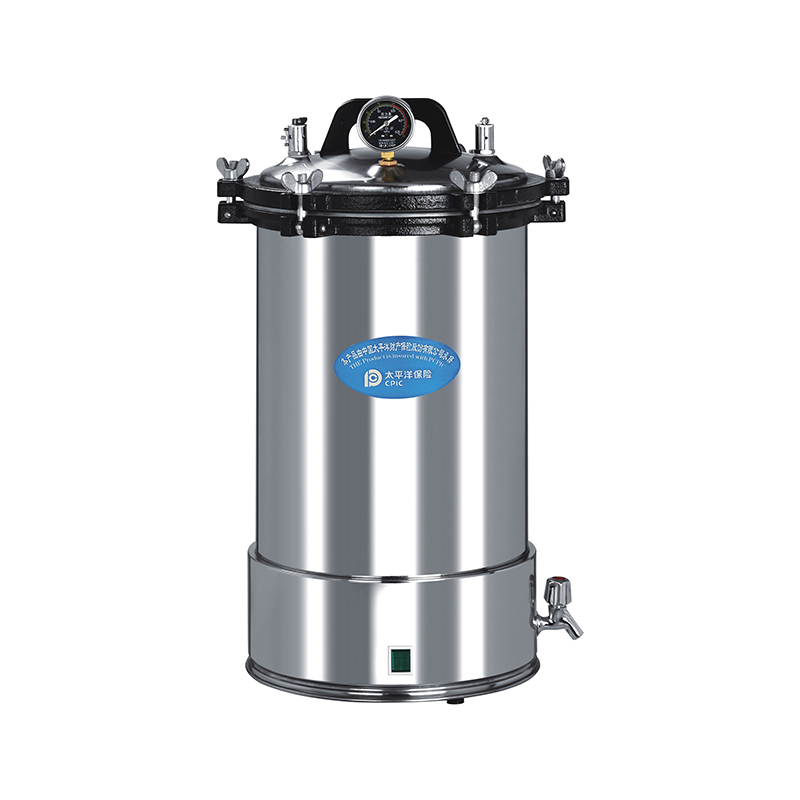Product Search
Exit Menu

What are the requirements for operating a steam sterilizer?
Posted by Admin | 04 Jul
Operating a Pressure Steam Sterilizer is an important step in ensuring the sterility of medical devices and laboratory equipment. There are a number of detailed requirements and steps that operators need to follow in order to ensure the effectiveness and safety of steam sterilizers:
1. Training and Qualification
Training
Operators must receive specialized training on how steam sterilizers work, including how steam is generated and transferred.
They should learn the procedures for operating the sterilizer, what to do in case of emergency, and solutions to common problems.
Qualification
Operators are required to possess relevant qualifications, such as a pressure vessel operator's license. This certificate is usually issued by the relevant authority to ensure that the operator has the necessary skills and knowledge.
2. Equipment Inspection
Appearance check
Check the appearance of the sterilizer to ensure that there is no physical damage or corrosion.
Check that seals and door locks are intact.
Indicator gauge check
Confirm that the pressure gauge, temperature gauge and other indicator gauges show normal.
Check that the water level is within the normal range and make sure that the water level gauge is clearly visible.
Valve check
Confirm the status of exhaust valve, air inlet valve and drain valve is normal, make sure the valve can be opened and closed normally.
3. Sterilization items preparation
Packaging
Properly pack the sterilized items with high temperature resistant and breathable materials, such as non-woven fabrics, special sterilization bags, etc. Make sure that the packaging will not interfere with steam penetration.
Ensure that the packaging will not affect the steam penetration, so that the sterilization effect is optimal.

Loading
Sterilized items should not be overstuffed, and enough space should be left for steam to fully contact the surface of each item.
Large items should be sterilized individually. Smaller items can be sterilized together, but avoid overlapping or crushing.
4. Operation Procedure
Setting parameters
Set the sterilization temperature (usually 121°C or 134°C) and time (usually 15 to 30 minutes, depending on the specific requirements) correctly according to the equipment manual.
Check that the sterilizer is preheated to the required temperature.
Starting the program
After starting the sterilization program, monitor the operating status of the unit, noting changes in pressure and temperature.
Ensure that the sterilizer reaches the set temperature and pressure and maintains the set time.
5. Safe Operation
During operation
Avoid opening the door of the Pressure Steam Sterilizer during equipment operation to prevent steam leakage and scalding.
If an intermediate inspection is required, stop the sterilization program first and follow the safety operation procedures.
End of Sterilization
After sterilization, wait for the equipment to cool to a safe temperature before opening the door to prevent steam burns.
When opening the door, stand to the side and avoid facing the steam exhaust outlet directly.
Regular Maintenance
Perform regular cleaning and maintenance of the equipment in accordance with the requirements of the equipment manual, including replacement of seals and inspection of safety valves.
Calibrate pressure gauges and temperature gauges regularly to ensure accurate readings.
6. Records and Reports
Records
After each sterilization operation is completed, a detailed record of the sterilization parameters and results, including time, temperature, pressure, etc., should be kept.
Keep the sterilization records for future reference and quality control.
Report
If any equipment abnormality or unsatisfactory sterilization result is found, it should be reported to the equipment maintenance personnel or the competent authority.
Carry out inspections and repairs to ensure that the equipment is always in the best working condition to avoid any impact on the sterilization results.
MAIL US
CONTACT US
+86-510-86270699
 Privacy
Privacy
 Wholesal Pressure Steam Sterilizer Manufacturers
Wholesal Pressure Steam Sterilizer Manufacturers
 Privacy
Privacy


 English
English русский
русский Français
Français Español
Español bahasa Indonesia
bahasa Indonesia Deutsch
Deutsch عربى
عربى 中文简体
中文简体















